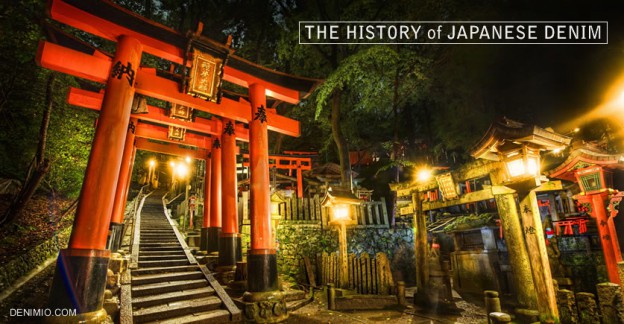For denim enthusiasts all around the world, Japanese denim is widely considered as being the best in the world. A big statement, we know, but it’s not without good reason. Though Japanese denim has a relatively short history, its premium construction and craftsmanship has definitely earned its famed reputation over the years.
To understand the history of Japanese denim, we must first understand how denim is created. Denim is a cotton twill textile in which the weft (the transverse thread) passes under 2 or more warp threads (the longitudinal threads). Meanwhile, indigo denim, the traditionally dark blue denim that we associate jeans with, dyes only the warp or weft threads, just one of them.
What sets Japanese premium denim apart from most other denim made today is the dye that is used in the production process. While most denim made today uses synthetic dye which costs less and contains less impurities, Japanese premiums are made using natural dye which gives them deep, rich colours that weathers over time. Years of training, tradition, craftsmanship and skills are put into producing a top notch, premium quality Japanese denim.
Another desirable trait of most classic denim is the selvage fabric that it is made of. Selvage comes from the word “self-edge”, referring to the woven edges of the fabric. Japanese selvage is woven on old Toyoda looms that results in tighter and denser weaves with uneven textures. A combination of all these traits give denim enthusiasts an opportunity to own a pair of Japanese denim with its own distinctive composition as the jeans are worn over time.
The history of American denim started earlier than Japan’s, not so much being a fashion statement that it was workwear for blue collared workers. As the denim trend caught on fire and became a fashion statement, it wasn’t long before the whole world followed suit. Japan’s biggest breakthrough in the fashion of selvage denim was in in the form of the KD-8 denim, produced by BIG JOHN. In 1973, all these pieces came together to form Japan’s first pair of jeans made solely and fully by their fellow countrymen. Let’s just say that this is the “grand-daddy” of all the Japanese denim you’re wearing today.
Many Japanese denim labels emerged after that, gaining traction not just in Japan but all over the world till today. One of the most distinctive label of the lot is possibly Momotaro Jeans. Priced up to a hefty $2000, a pair of PREMIUM quality Momotaro jeans (made from handwoven denim) surely holds up to its reputation as one of the best in the world. Hand-woven on a loom that was used to make kimonos back in the day, the denim itself takes up to 8 hours for only 3 feet of material. It is also dyed with natural indigo from the indigofera tinctoria plant, which goes against what most denim enthusiasts are looking for in a pair of jeans because it meant that the dye would penetrate the core of the cotton, causing it NOT to fade over time. After it is completed, the jeans will be washed in Seto Sea water. Each pair can take up to a year to complete.
With such a rich history, Japanese denim is definitely one that should go through your thought process when you’re considering to get a new pair of jeans. You may find it hard to choose anything else once you’ve tried the best of what Japanese premium denim has to offer.


Comments
2 tanggapan untuk “The History of Japanese Denim”
Right on-tihs helped me sort things right out.
Very cool blog! Loving your denim. I’ve been trying to find a poarif jeans with square pockets on front. I’ve seen few but so far notbeen able to find that “perfect” pair.